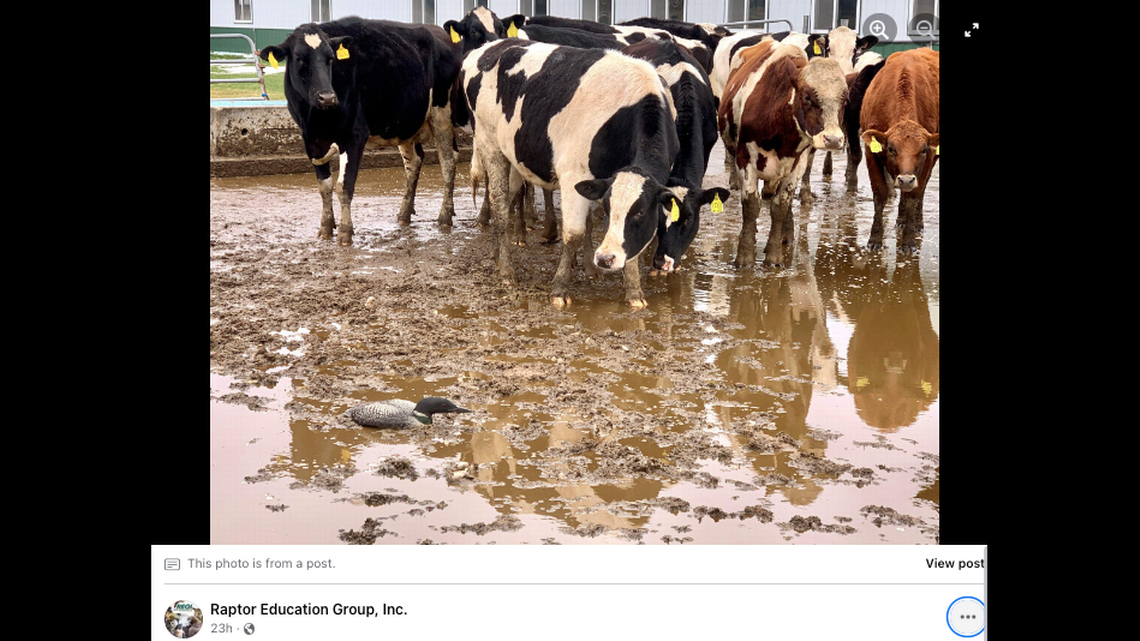Birds are falling out of the sky in Wisconsin. A natural phenomenon explains why

Migrating birds are crash landing in Wisconsin in what officials are calling a “loon fallout.”
The Raptor Education Group, a nonprofit organization dedicated to the care and rehabilitation of wild birds, said loons have been seen on land and in small ponds throughout the state.
Loons are described as water birds that typically only go “ashore to mate and incubate eggs.”
So what’s causing them to fall from the sky as they migrate north? The education group said the phenomenon called a loon fallout is the explanation.
“That occurs when atmospheric conditions are such that the migrating loons develop ice on their body as they fly at high altitude and crash land when they are no longer able to fly due to the weight of the ice on their body or the interference with their flight ability,” the education group said in a Facebook post. “The current ice/rain and unstable air currents is a perfect set-up for this phenomena to occur.”
Temperatures dropped in the 30s in parts of Wisconsin, including Wausau, during a cold front earlier this week, according to the National Weather Service. The cold temperatures were mixed with snow, sleet and freezing rain.
Marge Gibson, the co-founder and director of Raptor Education Group, said its center received “at least 25 phone calls” and dozens more Facebook messages Thursday, April 20, about loons discovered on land in Wisconsin, the Milwaukee Journal Sentinel reported.
These birds are more susceptible to icing hazards, as MPR News reported, because “they can’t perch in a tree to wait out a storm. They have to either swim or fly.”
Loons can become stranded when landing on a small body of water because they need a large water runway for takeoff, according to All About Birds.
It’s why the nonprofit is calling for the public to aid them.
“Loons cannot walk! They will need your help,” the center said. ”If you find a loon on land or on a road or cow pasture, realize that it cannot walk. Their legs are placed to the back of the bird and are made for swimming and diving, not walking.”
You’re encouraged to call Loon Rescue at 715-966-5415 or the Raptor Education Group at 715-623-4015 if you see a loon on land.
Loons need at least a quarter-mile of open water to get airborne. To transport them, place a blanket over their beaks and place them inside a container with air holes.
“They are very vulnerable on land,” Gibson told the Journal Sentinel. “As tough as they are, they can’t last long if they are in the middle of some field.”
2-day-old baby eagle has ‘heartbreaking’ death when nest plunges from Colorado tree
14-year-old mother bird returns to Michigan shore. Why ‘gabbY’ is so special

